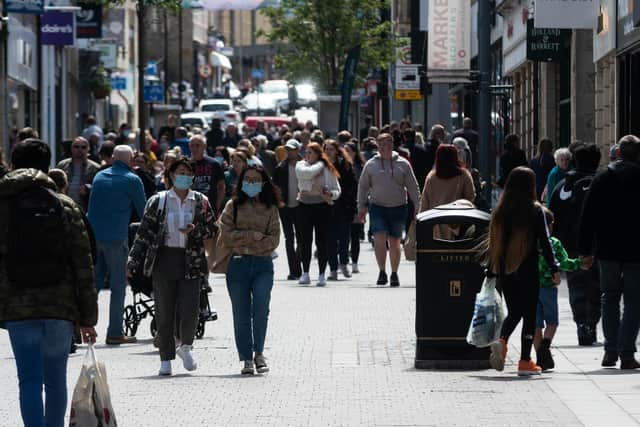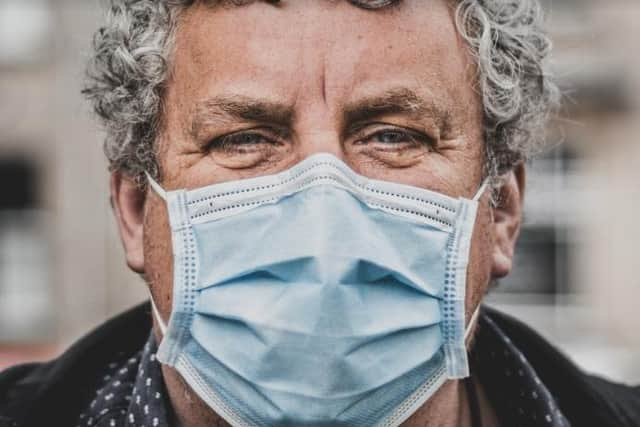Lancaster and Morecambe placed into Tier 3 Covid-19 alert level
and live on Freeview channel 276
The government has announced that following close discussions with local leaders, Lancashire will move from Local COVID Alert Level High to Very High from 00.01 on Saturday 17 October.
This means that new measures will come into place including:
Advertisement
Hide AdAdvertisement
Hide AdPeople must not socialise with anybody they do not live with, or have not formed a support bubble with, in any indoor setting or in any private garden or at most outdoor hospitality venues and ticketed events


People must not socialise in a group of more than 6 in an outdoor public space such as a park or beach, the countryside, a public garden or a sports venue
All pubs and bars must close, unless they are serving substantial meals
People should try to avoid travelling outside the very-high alert level or entering a very-high alert level area, other than for work, education or for caring responsibilities or to travel through as part of a longer journey
Advertisement
Hide AdAdvertisement
Hide AdResidents should avoid staying overnight in another part of the UK, and others should avoid staying overnight in the Very High Alert area


In addition, following discussions with local leaders it was agreed that from Monday 19th October at 00.01:
The adult gaming industry, casinos, bingo halls, bookmakers and betting shops, and soft play areas must close.
Car boot sales would not be permitted.
The rate of COVID-19 infections is rising rapidly across the UK. The ONS estimate that one in every 240 people in England had the virus in the week from 25 September to 1 October and that the numbers infected are doubling every seven to 12 days. Cases are not evenly spread, with infection rates rising more rapidly in some areas than others.
Advertisement
Hide AdAdvertisement
Hide AdIn Lancashire, infection rates are among the highest in the country and continuing to rise rapidly. Rates are highest for those aged 16-29 at 552 per 100,000 people, while in the most vulnerable age group, those aged over 60, cases stand at 214 per 100,000 people. This increases to 594 over 100,000 for the over 60s in Burnley and 671 per 100,000 for 16-29 year olds.
Hospitalisations can occur two to three weeks after someone is infected with the virus, meaning the government anticipates the number of patients in hospital in Lancashire to rise.
The number of patients with COVID-19 in intensive care beds has reached nearly half the number seen at the height of the pandemic earlier this year, and the latest data suggests there will be more people in mechanical ventilation beds in Lancashire within two weeks than there were in the first wave.
This is as a result of infections which have already happened, rather than a prediction – underlining the need for urgent action now to prevent the epidemic in Lancashire rising even further.
Advertisement
Hide AdAdvertisement
Hide AdTo support the local authority during this period, the government will be providing a support package worth £12 million.
The Government will also establish a dedicated, ministerial-led taskforce with additional funding to work with Lancashire leaders to support local businesses to recover over the coming 6 months.
Local COVID Alert Level: Very High will take effect across all parts of Lancashire: Burnley, Blackburn with Darwen, Blackpool, Chorley, Fylde, Hyndburn, Lancaster, Pendle, Preston, Ribble Valley, Rossendale, South Ribble, West Lancashire, Wyre.
These measures will be reviewed every 14 days to consider whether they are still appropriate.
Health and Social Care Secretary Matt Hancock said:
Advertisement
Hide AdAdvertisement
Hide Ad“An unrelenting rise in cases in Lancashire means we must act now, and we have worked intensively with local leaders to agree on additional restrictions.
“I know how heavy these additional challenges will weigh on everyday life for the people of Lancashire – but they are critical in bringing this virus under control.
“Without them, we risk the health of your loved ones, your most vulnerable, and your local NHS services. Now is the time to play your part, and we will make sure you are supported.”
The first peak demonstrated that the infection can spread fast and put huge pressure on the NHS, and already hospitals in Lancashire are beginning to see sharp increases in admissions, especially in elderly patients. Local leaders have therefore agreed to bring in new tougher measures to protect their local residents.
Advertisement
Hide AdAdvertisement
Hide AdAll available data for the areas that will move to Local COVID Alert Level: Very High on Saturday have been assessed by the Government, including the Health and Social Care Secretary, NHS Test and Trace, the Joint Biosecurity Centre (JBC), Public Health England (PHE), the Chief Medical Officer and the Cabinet Office. Data assessed includes incidence, test positivity and the growth rate of the virus.
The government said that it is essential that these outbreaks are contained to protect lives and our NHS, and prevent greater economic damage in the future. We face a new challenge as we head into the winter, and we know that even mild cases of COVID-19 can have devastating consequences for people in all age groups, along with the risk of Long Covid.
It added that its strategy is to suppress the virus while supporting the economy, education and the NHS, until an effective vaccine is widely available.
"Local action is at the centre of our response, and engagement with Local Authorities is, and will continue to be, a key part of this process," it said.
Comment Guidelines
National World encourages reader discussion on our stories. User feedback, insights and back-and-forth exchanges add a rich layer of context to reporting. Please review our Community Guidelines before commenting.